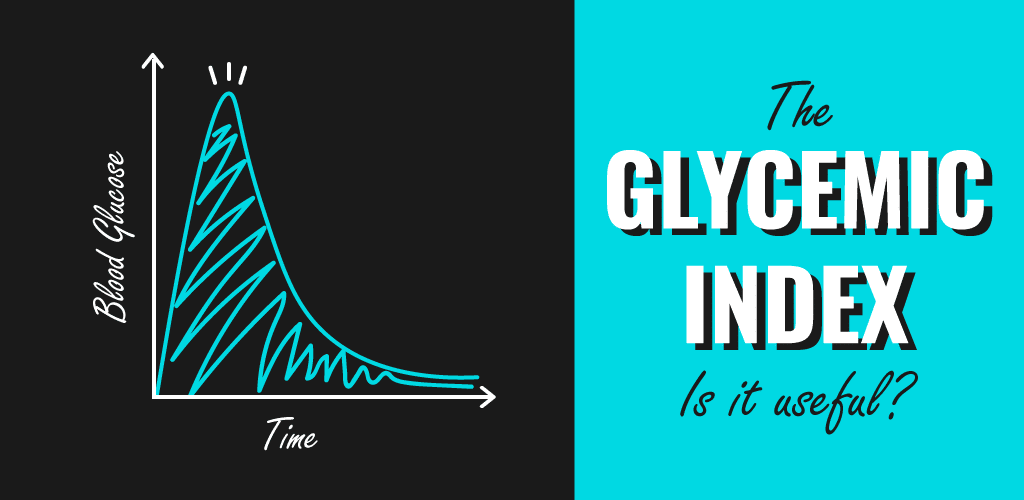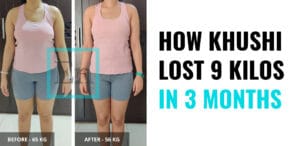At some point or the other, you must have heard about the Glycemic Index or GI. The GI measures how quickly a food increases blood sugar. Gurus claim that foods which increase blood sugar at a slower rate i.e. Low-GI foods are healthier. But is that true? Let’s have a look.
Breaking down the Glycemic Index
Every food consists of a certain amount of carbohydrates. The carbohydrates breakdown into glucose during digestion and enter the blood. This is seen by the rise in blood glucose.

Quickly digesting foods increase blood glucose rapidly, whereas slow digesting ones do the same at a slower rate. The GI measures this rate.
Measuring the Glycemic Index
The GI of a food is measured by comparing it with the GI of a test food. The test food is generally white bread or glucose. Let’s say we want to find out the GI of a banana, here’s a simplified version of how you can do that –
- First, a person will eat a banana after an overnight fast.
- Next, his blood glucose begins to rise. This is measured by testing blood samples at fixed time intervals.
- The same person consumes white bread and the same steps repeat.
- The rise in blood glucose produced by the banana is compared to the rise in blood glucose produced by the white bread.
- The banana’s GI is reported as a percentage of white bread.
- The GI of the banana is 51.
Interpreting the Glycemic Index
Now that you have measured the GI, how do you understand what it means?
The GI is a number between 0 and 100 –
- If the value is < 55 = Low-GI
- If the value is between 55 & 70 = Intermediate-GI
- If the value is > 70 = High-GI
Based on this, banana is a Low-GI food! This means that it increases blood glucose very slowly.
Glycemic Index measures only the rate at which blood glucose increases
It does not measure the amount of glucose entering the blood. Let’s take the example of watermelon.
Watermelon contains only a minuscule 8g of carbohydrate per 100g. But its GI is 72. This means that watermelon increases blood glucose rapidly. However, this isn’t a cause for alarm because the amount of increase in blood glucose is so tiny.
If you were to decide whether to consume watermelon or not based on just its GI, you’d probably not eat it.
Therefore, it is important to not look at the GI of food in isolation. The glycemic index is not significant in low-energy foods1 such as watermelon. A food’s GI measure is more meaningful when you use it in combination with the Glycemic Load (GL).
Subscribe to the Newsletter
and get 10% off ON ALL NUTRITION PLANS
Subscribe to the Newsletter
and get 10% off ON ALL NUTRITION PLANS
Glycemic Load measures the rate as well as the amount by which food increases blood glucose. It is measured using the following formula –

For example, to calculate the GL of 100g of watermelon,
which contains 8g of carbohydrate and has a GI of 72 –

Interpreting Glycemic Load
- If the value is < 10 = Low-GL
- If the value is between 10 & 19 = Intermediate-GL
- If the value is > 20 = High-GL
According to this, watermelon has a Low-GL.
Glycemic Index and Glycemic Load – Should you even bother?
I explained the concept of Glycemic Load to show you just how misleading the GI of a food can be. Just because a food is low or high-GI doesn’t make it healthy or unhealthy as we saw in the case of watermelon. Even nutritious foods such as potatoes are unhealthy based on GI. Therefore, the GL is superior to GI since it at least measures the glycemic response of a food more accurately than the GI.
So, is the GL useful in for weight loss and diabetes? This will be discussed in the next post where I go over the research which examines the relevance of GL for weight loss, diabetes and obesity.
Conclusion
Neither the GI nor the GL can qualify a food as healthy or unhealthy. They are purely measures of blood sugar responses of a food.
In this post, I covered just one of the topics of nutrition that you are confused about. However, there are so many more topics which you must be confused about when wanting to achieve your health goals. If you want to reach your health goals with ease, in a sustainable manner and without getting confused then give us a try. You’ll also get 20% off on your first nutrition plan if you sign up to the newsletter!! See all plans here.





One Response
Comments are closed.